Pascal Smelik's Pixel Cabinet is joined by clusters of wooden cubes
Dutch designer Pascal Smelik haphazardly assembled this storage cabinet using wooden sections connected by groups of small cubes that represent pixels.
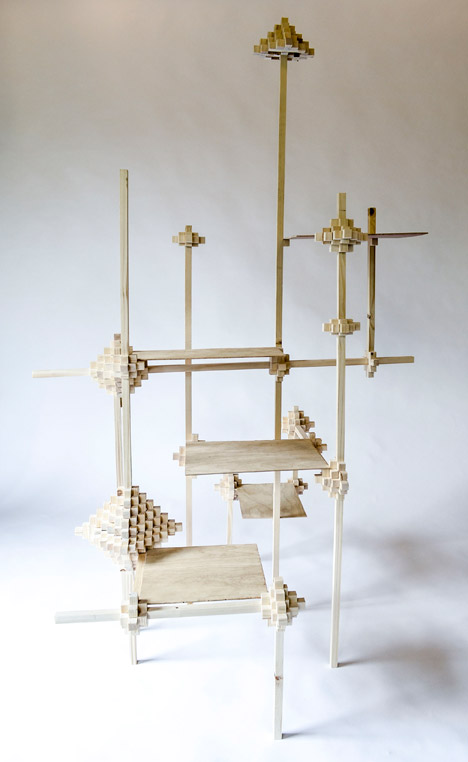
The Pixel Cabinet comprises thin pine shelves balanced on long upright supports, glued together at each joint using the clusters of wooden cubes.
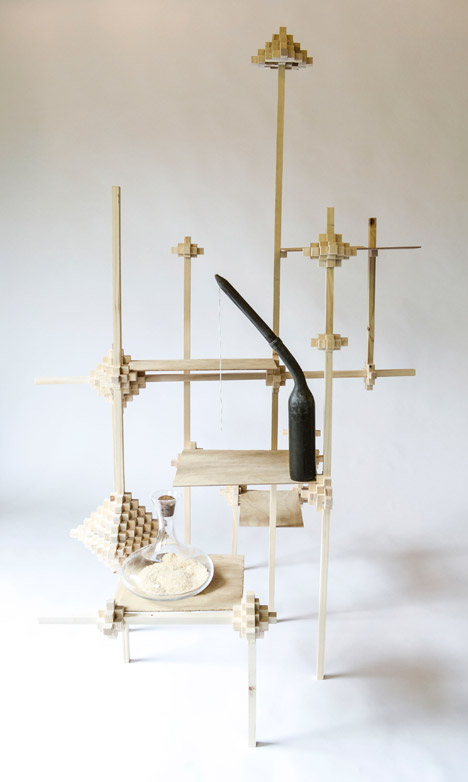
Despite using primarily traditional techniques, Smelik took digitalisation as a starting point for the project, looking at ways he could represent digital forms and make them three-dimensional.
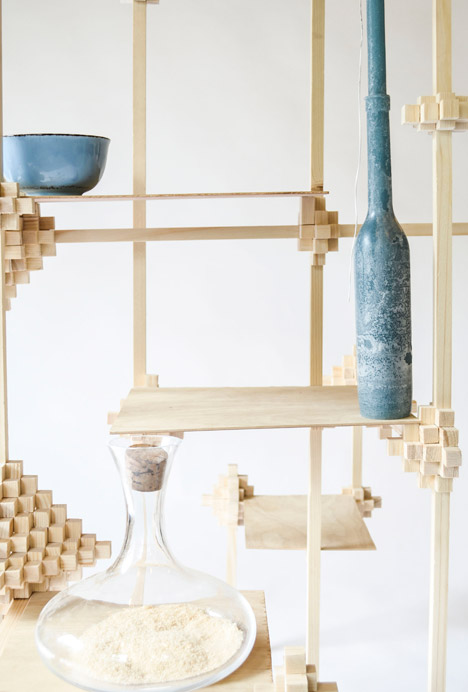
"In the digital world, images consist of pixels," he told Dezeen. "Images are two dimensional, products and objects are three dimensional."
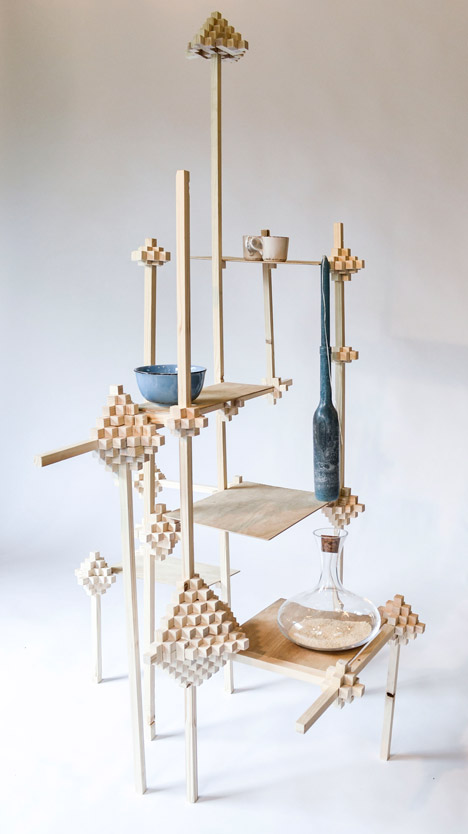
"I went on with the pixel part and put them into a three dimensional shape," Smelik explained. "By making wooden cubes and building them up, beautiful shapes started to emerge."
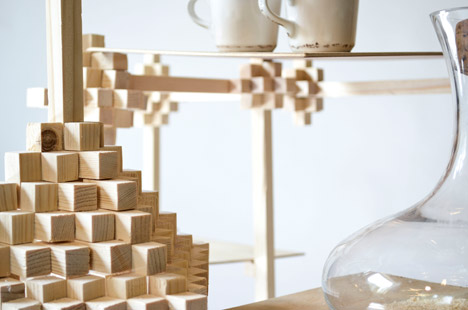
The University of the Arts Utrecht graduate uses what he calls the "unknown factor" during the design process.
Smelik explores unusual materials, techniques and combinations, and believes that the creation process should follow a unique route every time, even if that means it includes mistakes.
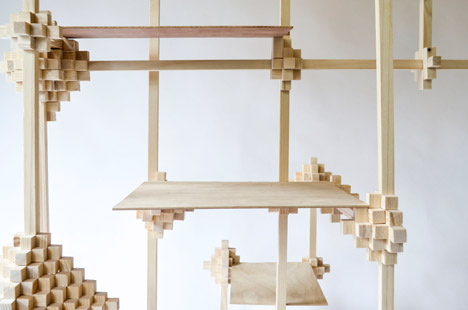
"Nowadays, design is so premeditated," he said. "Everything gets designed by a computer and the result does not differ from the rendering. The excitement you get when coming up with new possibilities and the unexpected is gone."
"Letting myself be led by the shapes and the possibilities of the material resulted in the first prototype of the Pixel Cabinet," Smelik said.
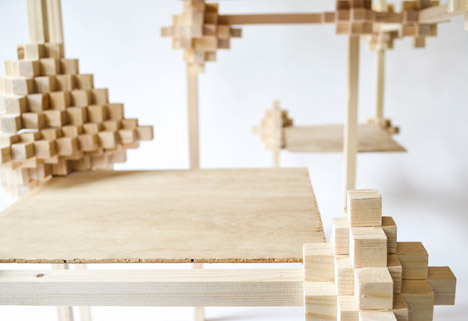
Currently a prototype, the Pixel Cabinet is available to commission via crowd-funding platform Crowdy House. Only three will be produced, each one to the client's individual specifications.